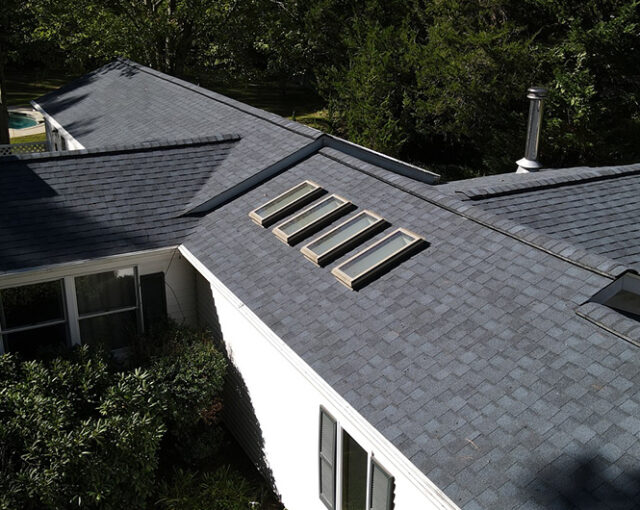Water Spot on Ceiling after Heavy Rain? Here’s What to Do!
You’re hoping for the best but getting prepared for the worst. In the vast majority of cases, a water spot on your ceiling after heavy rain means one thing: a roof leak. The stain you see is the result of water entering your roof and dripping down on top of your ceiling.
At Mid-Shore Exteriors, we’re a full-service roofing company that supports Maryland’s Eastern shore. Not only do we provide roof replacement and repair, but we also offer the key info to help homeowners understand what is happening to their home. Keep reading to learn more about a water spot on the ceiling, what to do about it, and the common roof leak causes!
Don’t Delay – Bring Out Out Team >What Causes a Water Stain on the Ceiling?

The yellowish, damp-looking water stain is enough to make most people feel ill at ease. You can be absolutely certain that this stain is the result of water damage – the main question is from where? While a roof leak is the most common answer, the water spot can also come from leaking plumbing or even condensation from your air conditioning system.
When trying to diagnose the water stain on your ceiling, the first thing to figure out is whether the spot is growing and if it feels damp to the touch. If either of those are the case, then the leak is still ongoing and the damage can get worse. The next thing to figure out is whether the spot gets bigger after a rainstorm or snow fall. If the spot is damp or fresh and there hasn’t been rain for a week, you may be looking at a different source. However, if the spot is worse after a storm, this is the surest sign it is in fact a roof leak.
Unfortunately, the damage isn’t limited to discoloration on your ceiling. If left alone, a roof leak can cause serious mold growth and even weaken the frame of your house. If this sounds like it’s the case, don’t worry, we’re here to help! When you’re facing a roof leak, we’re the local roofer to trust. Reach out to talk to our team today!
Most Common Reasons for Roof Leaks

Since a wet ceiling after heavy rain is a tell-tale sign of a roof leak, the next question is why your roof is leaking. These are the most common reasons for roof leaks that we see:
- Missing Shingles – If your roof loses shingles that make up the watertight barrier, it will leak. In our area, this often occurs following strong windstorms, and you may even see evidence of it in the form of shingles on your lawn.
- Loose Flashing – In addition to shingles, residential roofs are made of flashing that directs water away from seams. If those pieces of flashing are damaged or dislodged, leaks will occur. Fortunately, this is a fairly simple problem to identify and fix.
- Chimney Isn’t Properly Sealed – This reason for a roof leak only applies to certain homes, but it is still somewhat common. If the seals and seams around the chimney weren’t done properly, water can infiltrate there. That’s why checking the chimney is one of the first things roofers do.
- Exposed & Rusted Nails – On almost all roofs, nails keep the shingles in place. If those are exposed or rusted, though, they can actually allow a small amount of water to seep into the roof every time it rains. This is a common reason for roof leaks on homes with older shingle roofs.
The best way to find out why your roof is leaking is to schedule an inspection and a quote with our roofing experts. Not only will we be able to diagnose what’s behind the leak, but we’ll get you a price to repair or replace the roof, depending on the severity.
Compare roof repair vs. replacement!
Have a Water Spot on the Ceiling? Call Us!

Even a fairly small roof leak is a serious problem that demands your attention. If you have a water spot on your ceiling that you think is getting worse, don’t hesitate – talk to a professional. By bringing our experts out sooner than later, you limit the extent of the damage, protecting your roof and home.
Reach out right now to talk to our team!





